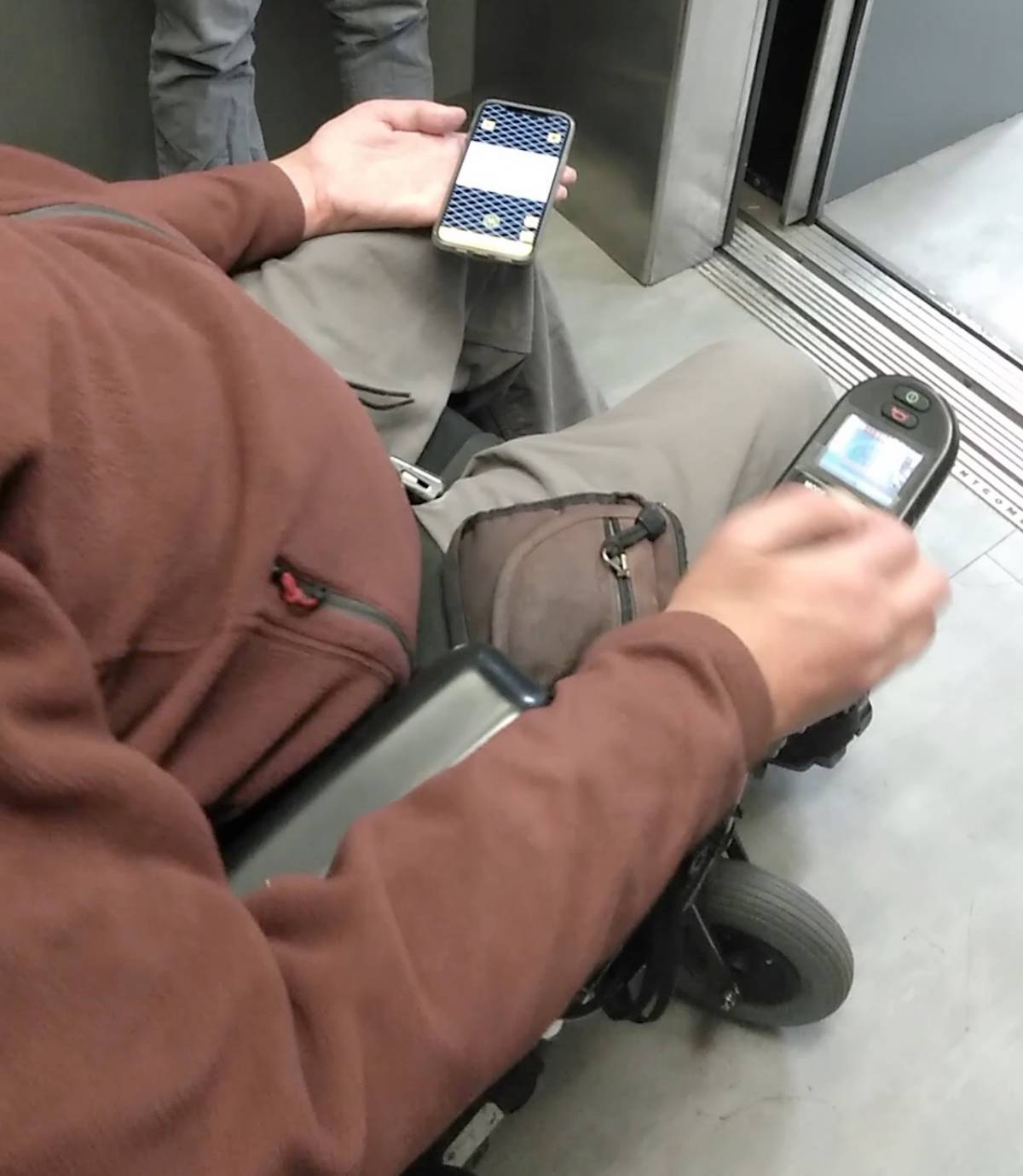Navigating an unfamiliar building can be discouraging and difficult to persons with disabilities. A team of Wichita State University researchers is in the early stages of developing digital maps to help accessibility indoors, where GPS or satellite systems often don’t work.
In December, the National Science Foundation Convergence Accelerator program awarded a Wichita State-led team a $750,000 grant to gather information and create digital maps of indoor spaces that could be used by persons with disabilities.
“A person using a wheelchair often doesn’t know the accessible route,” said Vinod Namboodiri, professor and associate director for research engagement in the College of Engineering. “It leads to lesser participation by people with disabilities in employment or maybe other aspects of life. What we’re trying to do is improve quality of life, improve employment opportunities out of this, hopefully which leads to broader societal gains.”
The creation of maps (MABLE – Mapping for Accessibility in Built Environments) through crowdsourcing, experiences, observations and robots will help persons with disabilities assess, plan and navigate indoor environments with audio and visual information. Envisioned users include those with visual or mobility impairments (blind, low vision, wheelchair users, cane users, etc.).
The project, Namboodiri said, can appeal to a wider population by helping anyone entering an unfamiliar building, such as freshmen on the first day of class.
“Maps allow you to study a space, weighing your comfort as in, ‘Do I even want to go to that building?” Namboodiri said. “You want to live independently and learn things.”
The NSF selected 16 multidisciplinary teams with projects that enhance opportunities for persons with disabilities. Namboodiri is proud that the Wichita State-led project is in a group with projects from schools such as Stanford, Cornell, Northwestern and Harvard.
Wichita State’s previous work in this area strengthened its credentials for the grants.
“It’s a very prestigious award and very selective,” Namboodiri said. “We got it because of our history. They felt we could make contributions. We made a good case from the middle of the country that we can do stuff, too.”
In 2020, the NSF awarded more than $1.1 million to Namboodiri and a team to create a community-wide wayfinding system for people with disabilities. That project focused on filling in the gaps of traditional GPS systems to help with emergency evacuation, remote assistance, and travel within transit system by using an app.
In 2021, NSF invited Wichita State to hold a workshop that highlighted the school’s emphasis on accessibility and inclusion.
“We are very much invested as a university in promoting solutions for people with disabilities,” Namboodiri said. “That workshop led to the National Science Foundation creating a funding opportunity for everyone to apply around the country. That’s where this project came from.”
The first phase of the NSF grants is designed to develop new technologies and tools to enhance the quality of life and employment access and opportunities for persons with disabilities. At the end of phase one, teams submit a formal proposal and participate in a pitch to be selected for phase two. Selected teams will receive up to $5 million of additional support over 24 months to develop their solutions and sustainability development plans.
“It’s essentially a competition among these 16 teams,” Namboodiri said. “Academics typically work at a very slow, methodical fashion that takes many years. They are essentially turning us into start-ups in some sense. They are training us to pitch a product, create the right marketing message, so that we can reach, not just end users, but people who could fund projects.”
The research team includes Wichita State Associate Professor Nils Hakansson (College of Engineering), Georgia Tech Professor Patricio Vela (School of Electrical and Computer Engineering), Kansas State Professor Siny Joseph (Kansas State University College of Technology and Aviation) and Research Professor Ted Conway (Wichita State). Wichita State students will help with the research.


 Courtesy photo
Courtesy photo